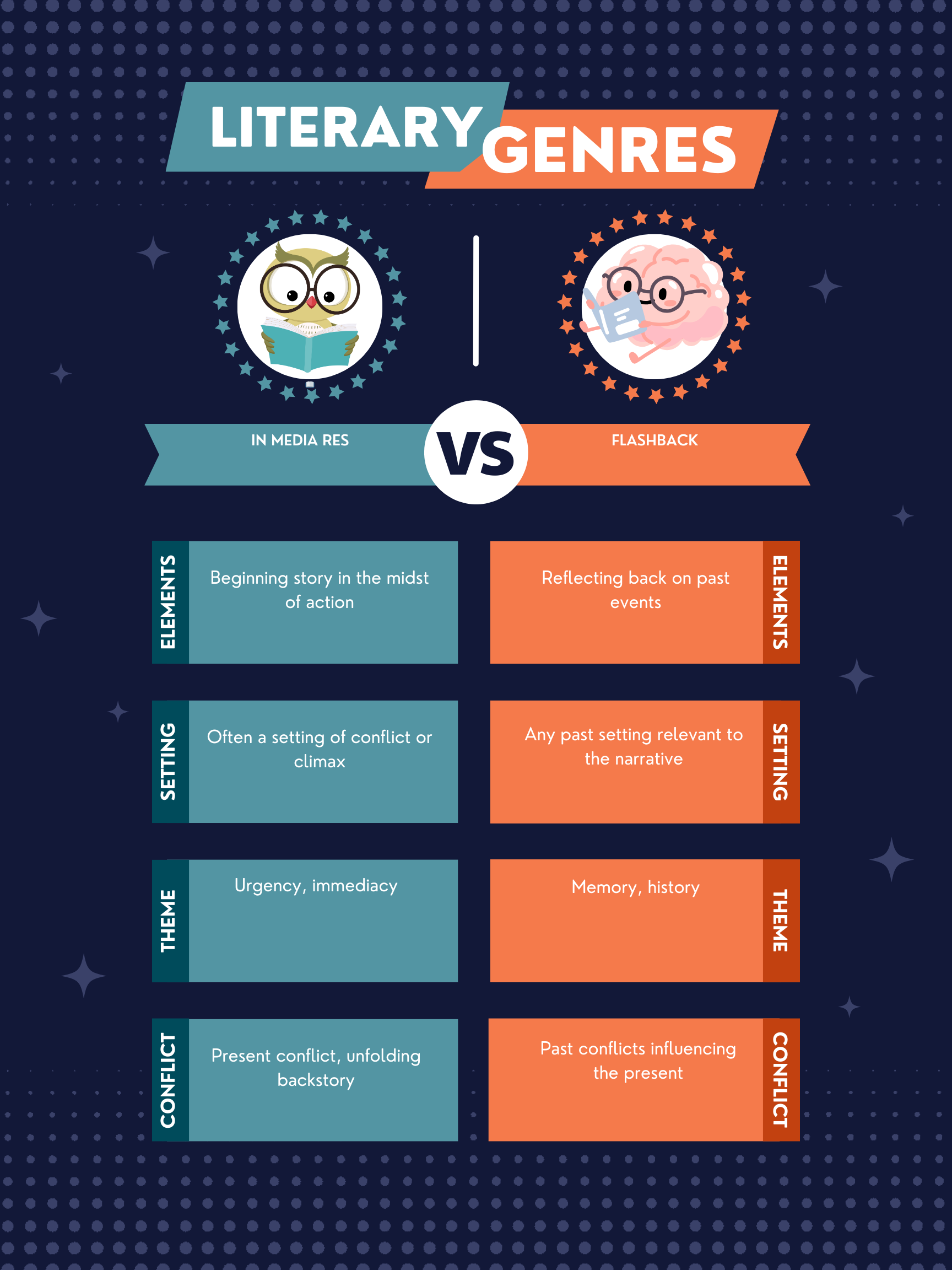In Media Res begins a story in the middle of the action, without preamble; Flashback is a narrative technique that transports the reader back in time to past events.
These narrative strategies enrich storytelling by adding intrigue, depth, and complexity, allowing writers to play with the chronological flow of events to engage readers more effectively.
In Media Res
In Media Res is Latin for “into the middle of things.” It refers to a narrative that starts not at the beginning of the story but at some later point. By dropping readers directly into the action, it creates immediate engagement and curiosity about the events leading up to this point. Homer’s “The Odyssey” is a classic example, beginning in the middle of Odysseus’s journey home from Troy, with prior events revealed through later narratives and flashbacks.
Flashback
A flashback interrupts the chronological sequence of a story to take the reader back to events that happened earlier. This technique provides background information that can deepen understanding of the plot or characters, revealing motivations, backstory, or context that enriches the current narrative events. “Wuthering Heights” by Emily Brontë frequently employs flashbacks to unravel the complex histories of its characters and their relationships.
Summary
| Literary Device | Definition | Purpose | Usage | Relevant Examples |
|---|---|---|---|---|
| In Media Res | Starting a story in the middle of the action. | To engage readers by creating immediate intrigue and dynamic entry into the narrative. | Novels, films, short stories. | “The Odyssey” by Homer. |
| Flashback | A narrative technique that transports the reader back in time to past events. | To provide background and context to the story’s characters and events. | Novels, films, short stories, memoirs. | “Wuthering Heights” by Emily Brontë. |
Writing Tips
For In Media Res:
- Grab Attention: Ensure the opening scene is compelling and raises questions you intend to answer later.
- Balance Clarity and Mystery: While starting in the middle of things, keep the narrative clear enough not to confuse readers.
- Plan Your Structure: Know the story’s beginning and end, even if the audience does not. This helps in weaving the subsequent revelations coherently.
For Flashback:
- Cue Readers Clearly: Use clear transitions when moving between the present and past to avoid confusing readers.
- Make It Relevant: Ensure that the flashback adds value, providing necessary insight into the plot or character development.
- Maintain Story Flow: Use flashbacks judiciously so they complement rather than disrupt the narrative flow.
FAQs
Can a story use both in media res and flashbacks?
Yes, many stories begin in the midst of action and employ flashbacks to fill in the backstory as the narrative progresses.
How do I choose between in media res and flashback?
Consider your story’s needs. If you want to hook your readers from the first page, in media res might be the best choice. Use flashbacks when you need to provide context or background to enhance the current storyline.
Exercise
Read the following excerpt: “The explosion rocked the building as he dove for cover. Later, sitting among the rubble, he remembered the first day he walked into the agency.”
Answer: The first sentence represents in media res, throwing us into the action. The second sentence introduces a flashback, offering a glimpse into the past.
Other Interesting Literary Device Comparisons
- Direct vs. Indirect Characterization: Direct characterization tells the audience what a character is like, while indirect characterization shows it through actions, speech, and other characters’ reactions.
- Foreshadowing vs. Red Herring: Foreshadowing hints at future events in a story, while a red herring misleads readers to create surprise or suspense.
- First-Person vs. Third-Person Narration: First-person narration is told from a character’s perspective using “I,” while third-person narration uses “he,” “she,” or “they” and can offer a wider view of the story’s world.
These comparisons illuminate the myriad ways narratives can be structured and characters developed to create engaging, multifaceted stories.

